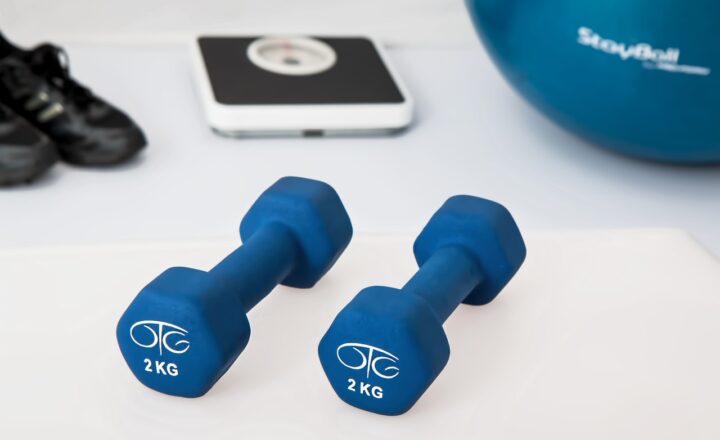How to Gain Lean Muscle Without Bulking Up Too Much
November 14, 2024

Building lean muscle without adding excessive bulk is a goal for many fitness enthusiasts. Achieving this requires a strategic approach combining diet, exercise, and lifestyle adjustments. In this article, we will explore effective strategies for gaining lean muscle while minimizing fat gain, allowing you to achieve a toned and athletic physique.
1. Understanding Lean Muscle vs. Bulk
Before diving into the strategies, it’s essential to differentiate between gaining lean muscle and bulk.
– Lean Muscle: Refers to increased muscle mass without significant fat gain. This type of muscle is generally more defined and complements a toned appearance.
– Bulking Up: Involves gaining weight quickly, which often includes a higher percentage of fat. While some bulking can help increase muscle size, it may lead to a less desirable physique if not managed correctly.
The goal of this article is to help you increase muscle mass while keeping fat levels low, ensuring you look and feel fit.
2. Nutrition: The Foundation for Lean Muscle Growth
Nutrition plays a critical role in muscle gain. Here are key dietary strategies to optimize your eating habits:
– Prioritize Protein: Aim for a protein intake of about 0.7 to 1.0 grams per pound of body weight. Protein is essential for muscle repair and growth. Good sources include lean meats, fish, eggs, dairy, legumes, and plant-based proteins like quinoa and tofu.
– Control Your Calories: Rather than consuming excess calories to bulk up, focus on a slight caloric surplus. This means eating more calories than your body burns, but not by too much—adding an extra 250-500 calories per day can be a good starting point.
– Choose Nutrient-Dense Foods: Focus on whole foods that provide a high nutrient-to-calorie ratio. Incorporate plenty of vegetables, whole grains, healthy fats (like avocados, nuts, and olive oil), and complex carbohydrates (like brown rice and sweet potatoes).
– Carbohydrates for Energy: Include complex carbohydrates in your diet to fuel workouts and proper recovery. The right carbs help replenish glycogen stores in muscles after exercise.
– Stay Hydrated: Maintain good hydration levels for optimal performance and recovery. Water is crucial for various bodily functions, including nutrient transport and muscle recovery.
3. Smart Training Techniques
Your workout regimen is equally important for gaining lean muscle. Implement these training techniques to promote muscle growth:
– Strength Training: Focus on resistance training using free weights, machines, or bodyweight exercises. Aim for compound movements such as squats, deadlifts, bench presses, and pull-ups. These exercises activate multiple muscle groups, promoting greater muscle hypertrophy.
– Higher Reps with Moderate Weight: Instead of lifting heavy weights for low reps, consider lifting moderate weights for higher reps (8-15 reps per set). This approach enhances muscular endurance while minimizing fat gain.
– Focus on Progressive Overload: Gradually increase the weights or intensity of your workouts to consistently challenge your muscles. This principle is vital for continued muscle growth.
– Include Cardiovascular Exercise: Incorporate cardiovascular workouts to maintain a healthy body fat percentage. Moderate-intensity aerobic exercises combined with strength training can help preserve lean muscle while promoting fat loss.
– Train Consistently: Consistency is vital when trying to gain muscle. Develop a structured workout routine, aiming for 3-5 days of strength training per week.
4. Recovery Matters
Recovery is just as important as the workout itself. Here are ways to enhance your recovery:
– Get Adequate Sleep: Aim for 7-9 hours of quality sleep per night. Sleep is crucial for recovery, hormonal balance, and muscle growth.
– Prioritize Rest Days: Incorporate rest days into your routine, allowing your muscles to recover and grow. Consider active recovery days where you engage in light activities such as walking, yoga, or swimming.
– Listen to Your Body: Pay attention to signs of overtraining, such as persistent soreness, fatigue, or a decline in performance. Adjust your workout intensity and frequency as needed.
– Consider Supplements Wisely: While nutrients from whole foods are the best source, certain supplements like whey protein or branched-chain amino acids (BCAAs) can help meet protein needs and aid recovery when taken around workouts.
5. Monitor Progress & Adjust Accordingly
Regularly assess your progress to ensure you’re moving towards your goal of gaining lean muscle without unnecessary bulk. Here’s how:
– Keep a Training Journal: Track your workouts, including the exercises performed, weights lifted, and reps completed. This will help you visualize progress and maintain focus.
– Monitor Body Composition: Use methods like skinfold measurements, body circumference measurements, or body composition scales to track changes in muscle and fat amounts.
– Adjust Food Intake: If you are gaining excess fat, assess your caloric intake and make necessary adjustments. Conversely, if you’re not gaining muscle, you may need to increase your caloric surplus.
– Stay Flexible: Be willing to modify your strategy as conditions change (e.g., training fatigue, body changes, or schedule shifts). The key is to remain adaptable and committed to your goal.
Conclusion
Gaining lean muscle without bulking up too much is achievable with the right approach to nutrition, training, and recovery. By prioritizing protein intake, smart strength training, and recovery practices, you can build a strong, defined physique. Monitor your progress and be willing to adapt your strategies along the way. Remember, the journey to achieving your fitness goals should be as rewarding as the results you achieve.
If you’re determined to make the transition to lean muscle gain, begin today, applying the techniques outlined and incorporating them into your lifestyle. With dedication and consistency, you’ll be well on your way to achieving the body you desire.







